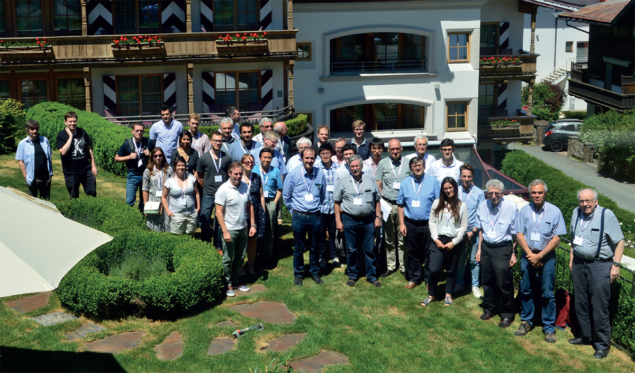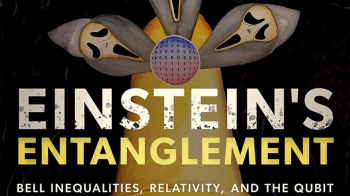
The Humboldt Kolleg conference Discoveries and Open Puzzles in Particle Physics and Gravitation took place at Kitzbühel in the Austrian Alps from 24 to 28 June, bringing Humboldt prize winners, professors and research-fellow alumni together with prospective future fellows. The meeting was sponsored by the Humboldt Foundation, based in Bonn, whose mission is to promote cooperation between scientists in Germany and elsewhere. The programme focused on connections between particle physics and the large-scale cosmological structure of the universe.
The most recent LHC experimental results were presented by Karl Jakobs (Freiburg and ATLAS spokesperson), confirming the status of the Standard Model (SM). A key discussion topic raised by Fred Jegerlehner (DESY-Zeuthen) is whether the SM’s symmetries might be “emergent” at the relatively low energies of current experiments: in contrast to unification models that exhibit maximal symmetry at the highest energies, the gauge symmetries could emerge in the infrared, but “dissolve” in the extreme ultraviolet. Consider the analogy of a carpet: it looks flat and invariant under translations when viewed from a distance, but this smoothness dissolves when we look at it close up, e.g. as perceived by an ant crawling on it. A critical system close to the Planck scale – the scale where quantum-gravity effects should be important – could behave similarly: the only modes that can exist as long-range correlations, e.g. light-mass particles, self-organise into multiplets with a small number of particles, just as they do in the SM. The vector modes become the gauge bosons of U(1), SU(2) and SU(3); low-energy symmetries such as baryon- and lepton-number conservation would all be violated close to the Planck scale.
Ideas connecting particle physics and quantum computing were also discussed by Peter Zoller (Innsbruck) and Erez Zohar (MPQ, Munich). Here, one takes a lattice field theory that is theoretically difficult to solve and maps it onto a fully controllable quantum system such as an optical lattice that can be programmed in experiments to do calculations – a quantum simulator. First promising results with up to 20 qubits have been obtained for the Schwinger model (QED in 1+1 dimensions). This model exhibits dynamical mass generation and is a first prototype before looking at more complicated theories like QCD.
The cosmological constant is related to the vacuum energy density, which is in turn connected to possible phase transitions in the early universe.
A key puzzle concerns the hierarchies of scales: the small ratio of the Higgs-boson mass to the Planck scale plus the very small cosmological constant that drives the accelerating expansion of the universe. Might these be related? The cosmological constant is related to the vacuum energy density, which is in turn connected to possible phase transitions in the early universe. Future gravitational-wave experiments with LISA were discussed by Stefano Vitale (Trento) and are expected to be sensitive to the effects of these phase transitions.
A main purpose of Humboldt Kolleg is the promotion of young scientists from the central European region. Student poster prizes sponsored by the Kitzbühel mayor Klaus Winkler were awarded to Janina Krzysiak (IFJ PAN, Krakow) and Jui-Lin Kuo (HEPHY, Vienna).







